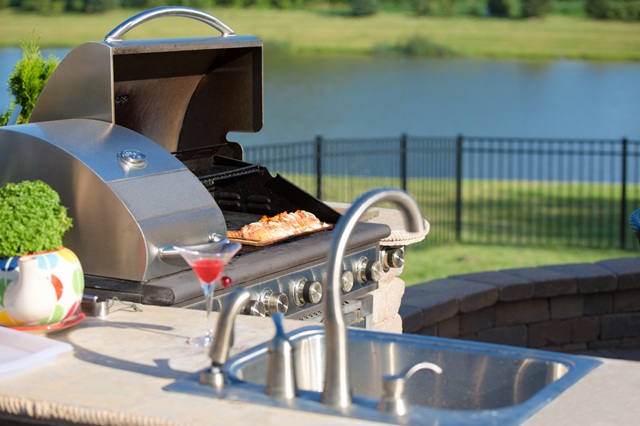An outdoor kitchen can be the crown jewel of any backyard, turning a simple patio into a fully functional space for entertaining and cooking under the open sky. But owning one isn’t just about weekend grilling and summertime gatherings, it also comes with responsibilities. Properly managing your outdoor kitchen ensures it remains efficient, clean, and ready to use throughout the year. Here are some essential outdoor kitchen management tips to help you protect your investment and make the most of your al fresco culinary space.
1. Design with Maintenance in Mind
If you're in the planning stages, choose materials that are durable and easy to clean. Stainless steel is a favorite for outdoor appliances due to its weather resistance and sleek appearance. For countertops, go with non-porous surfaces like granite or concrete, which can handle temperature fluctuations and are simple to wipe down.
Consider layout flow as well. Just like an indoor kitchen, your outdoor setup should follow the classic "work triangle", between the cooking, prep, and storage areas, to maximize efficiency and minimize unnecessary movement.
2. Establish a Cleaning Routine
A clean outdoor kitchen is a long-lasting one. After each use, clean the grill grates, wipe down countertops, and wash any utensils or tools. Periodically, give your grill and appliances a deeper clean to remove grease buildup and prevent rust.
Don't forget to check the sink (if installed) for clogs and flush it out regularly. Also, sweep the floor and remove debris that could attract pests or create slipping hazards.
3. Protect Appliances and Surfaces
Invest in weather-resistant covers for your grill, refrigerator, and cabinetry when not in use. This helps extend the life of your appliances by shielding them from rain, sun, and snow. If you live in an area with harsh winters, consider shutting down and winterizing your kitchen completely during the off-season, this includes draining water lines, unplugging electrical appliances, and removing perishables.
For added protection, use shade structures like pergolas, awnings, or umbrellas to reduce direct sunlight exposure, which can cause fading and warping over time.
4. Organize Smartly
Just like an indoor kitchen, an organized outdoor space improves functionality. Use weatherproof storage solutions like stainless steel cabinets or sealed bins for utensils, seasonings, and accessories. Label drawers and use dividers to keep everything easily accessible.
Don’t forget essentials like cutting boards, grill tools, extra propane tanks, and cleaning supplies, store them in logical zones according to use.
5. Keep Safety a Priority
Ensure you have a fire extinguisher nearby and know how to use it. Check gas lines for leaks regularly, and maintain proper ventilation around cooking areas. Lighting is also crucial, install overhead or task lighting for evening use to prevent accidents and improve visibility.
An outdoor kitchen can transform your backyard into a true living and entertaining space. With good planning, consistent care, and smart organization, you’ll enjoy delicious meals and great memories outdoors for years to come.






